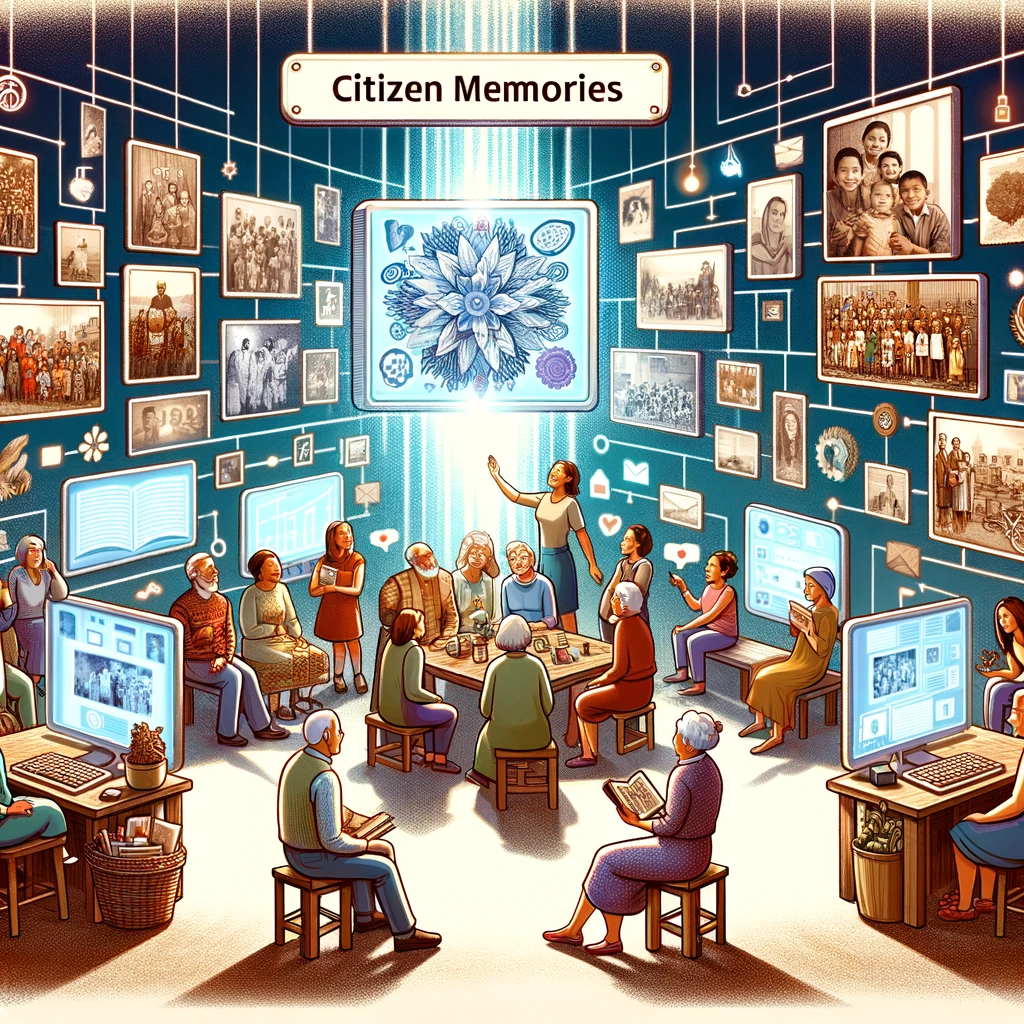Citizen memories refer to the collective memories and histories of a community or group of people. These memories can be a valuable part of a cultural heritage, as they help to preserve the unique traditions and experiences of a community.
One way that technology can be used to help keep citizen memories is by creating online platforms that allow people to share their stories and experiences with others. This can help to ensure that the memories of a community are not lost, and that they can be shared and passed down to future generations.
For example, the European [Cultural Heritage Marketplace] is an online platform that allows people from all over Europe to buy and sell a wide range of cultural heritage items, including traditional crafts, artwork, and other items that are unique to their cultural group. By providing a space for people to share their cultural heritage, the Marketplace helps to preserve and celebrate the diversity of European cultures, and can also serve as a valuable resource for those interested in learning about the histories and traditions of different communities.
In addition to providing a platform for sharing cultural heritage items, the Marketplace could also include features such as forums or blogs where people can share their memories and experiences. This could include stories about their cultural traditions, family histories, or other experiences that are unique to their community. By providing a space for people to share their memories and experiences, the Marketplace can help to keep citizen memories alive and ensure that they are not lost.
In conclusion, keeping citizen memories is an important part of preserving cultural heritage. By using technology to create online platforms that allow people to share their cultural heritage and experiences, we can help to preserve and celebrate the unique traditions and histories of different communities.
Citizen Memories: A Case Study on Using Technology to Preserve Community History
What are citizen memories?
Citizen memories refer to the collective memories and experiences of a community or group of individuals. These memories can take many forms, including oral histories, photographs, and other documents.
Why is it important to preserve citizen memories?
Preserving citizen memories is important because it helps to document and understand the history and culture of a community. It can also provide a sense of connection and belonging for community members, as well as a way to pass on cultural traditions to future generations.
Case study: Using technology to preserve community history
One way to preserve citizen memories is through the use of technology. By using technology to document and share citizen memories, communities can create a permanent record of their history and traditions.
For example, consider the case of a small town in rural Europe. The town has a rich history and a unique cultural identity, but many of the residents are elderly and may not have the opportunity to share their memories with younger generations. To preserve the town’s citizen memories, a group of local volunteers could create an online platform to document and share the town’s history.
This online platform could take the form of a website or app and could include a variety of resources, such as oral histories, photographs, and other documents. It could also feature interactive maps and other multimedia content to help bring the town’s history to life. By using technology to document and share citizen memories, the community can create a permanent record of its history and traditions and ensure that they are not lost to future generations.
Key takeaways:
Citizen memories refer to the collective memories and experiences of a community or group of individuals.
Preserving citizen memories is important for documenting and understanding the history and culture of a community, as well as for fostering a sense of connection and belonging.
Technology can be used to preserve citizen memories by creating a permanent record of community history and traditions.

